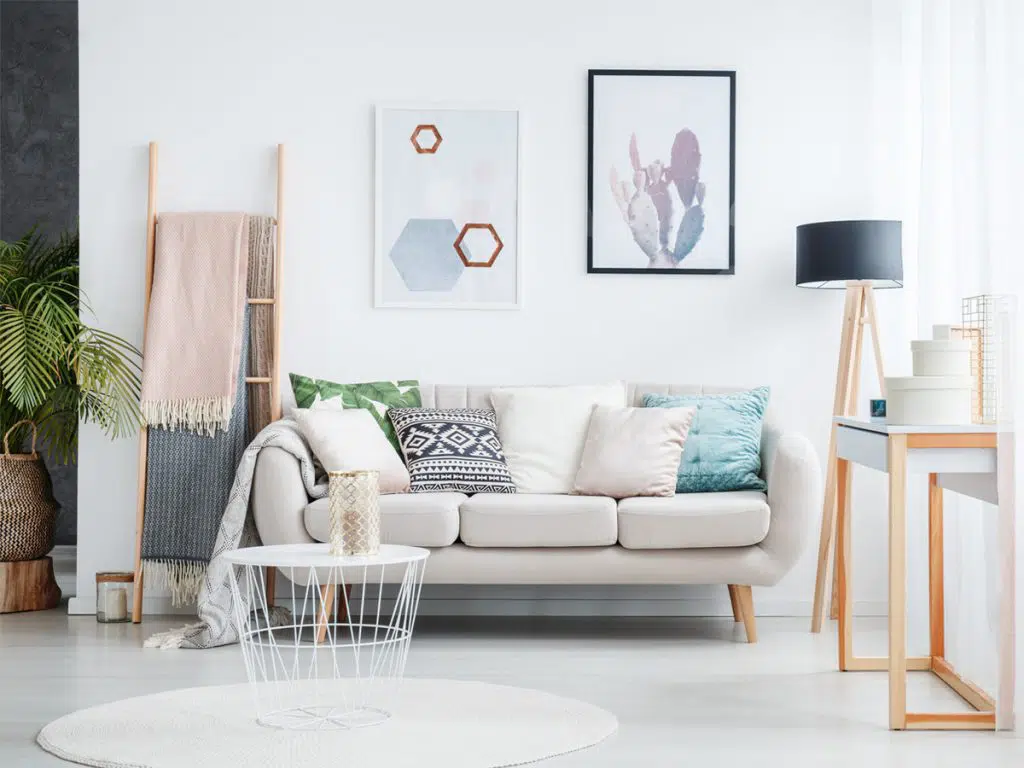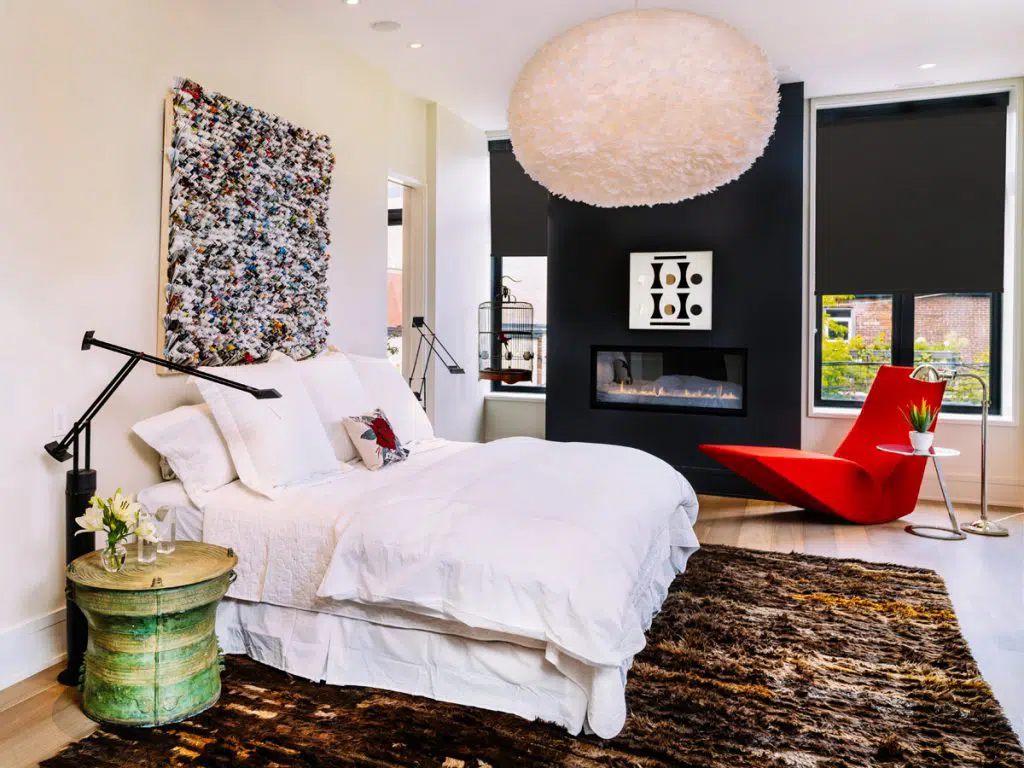Whether the project only concerns one room or an entire house or apartment to decorate and make your own, there is usually a vision in your head that you want to materialize.
However, many of us hesitate in going bold and taking the leap to deck out our home in our choice of themes. If that’s you, you can still add color or pops of color, slowly building your way up until you can indulge in your preferences.
You can start with neutral colors and earthy tones such as white, ochre, cream, etc. They are safe, timeless, and work with a wide range of décor styles and themes. They are easy to plan around and adding an extra splash of color or bright hues can brighten up any room.

Furthermore, adding color with accessories, etc. give you leeway to play around and experiment with different colors. This is especially perfect for people who love a different color with every passing season or like too many things to commit to just one theme or color palette.
With a few pillows, throws, odds and ends or just a few plants, you can add visual interest to your home. This enhances the overall appeal of the space and shows a little bit more of your flair.
But before we move on to discussing different ways of adding color, let’s take a look at two very important helpful tips that will assist you in this colorful, interior décor venture.
Tip #1 – The 60-30-10 Rule
The 60-30-10 rule is quite well-known among interior designers. It describes the distribution of the hues used in a particular room, where 60% of the space should be covered with the dominant or primary color of your chosen color palette. This will most likely be the neutral shade that will cover most of the walls and major furniture pieces.
Next in line is 30% of a secondary hue. This adds visual interest and breaks up the monotony of the dominant color. You can integrate this color with smaller furniture pieces, curtains or drapes, rugs, and other major accessories.
The last 10% is the accent color that will be the focal point tying the rest of the décor together. This hue is more like a pop of color that adds a bit of spark and completes the look. In other words, this color does what jewelry does for an outfit – it completes it to enhance the overall aesthetic. The addition of cushions, vases, jars, bowls, frames, artwork and other small decorative pieces will do the room justice.
For example:
- Paint the walls white (primary color);
- Add wood-textured blinds or solid-colored shutters or shades. Norman® offers countless options when it comes to customization , down to the color, stain, special options and texture of the blinds, shutter or shade;
- Use a bright blue as the accent color by adding it in the form of cushions.
Tip #2 – Choosing the Colors
While it’s a big world when it comes to colors, hues, shades, and tones, there is a thought process that goes into deciding the right color palette for your home. When adding color around your home, keep balance in mind.
You want to make sure none of the colors clash or are too loud, creating visual chaos. The colors you choose should complement each other and tie everything together instead of making the room feel like a mish-mash of different colors that don’t go together at all.
Now, there are two ways you can make your choice when adding colors around your home. Pick one that is more your speed and close to your aesthetic preferences:
Complementary Colors
Complementary colors, as the name suggests, complement each other. If you look at the color wheel, the colors across from each other are defined as complementary. For example, blue and yellow or orange and purple are complementary colors. You can choose an off-white or beige primary color and choose orange or purple as your secondary and accent colors.
Analogous Colors
When it comes to analogous colors, these are shades that are next to each other on the color wheel. Red and orange or yellow and green are two examples of analogous colors. These go very well together and are more casual and subtle, especially when compared to complementary colors as there is less contrast.
How to Add Colors around Your Home
When you combine the different types of furniture, window coverings, décor objects, and accessories with a range of colors and shades on the color wheel, you have endless possibilities. You can keep it very simple by adding one colorful object in an otherwise monochromatic room.
However, here are some ideas to spark your inspiration for adding colors:
1. Accessories
Rugs are great, whether you want to add a solid color piece or a patterned one to tie in all the colors and textures used in the room. They are also a great focal point for the room that has an otherwise simple and minimalistic feel.
Similarly, cushions and other textiles, such as throws are the easiest way to incorporate another color in the room. You can either use complementary or analogous colors or go the other way and choose different tones or shades of the same color.
2. Window Coverings
Window coverings can also be a focal point of inspiration. Norman® has a large range of shutters, blinds, and shades available in a variety of window treatment color trends that you can customize to meet your needs. You can choose a solid color to accent the rest of the room such as a fashion-forward solid-colored fabric in our honeycomb, roller and roman shades. A wide variety of solid paint colors in our shutters are also available, or you can also choose a custom color for the perfect look.
Window coverings that highlight the beauty of natural materials are also a great way to add color, depth and sophistication to your styling. Premium hardwood shutters, available in a variety of stain colors are a great choice. Roller shades are also a great option with fabrics made from natural materials such as jute and other natural fibers.
3. Plants
If you don’t want to go too bold or prefer modern, monochromatic color palettes, plants are a great way to add color without overwhelming the room visually. You can go even smaller by adding floral arrangements to add a vibrant hue, and change colors as frequently as you like to suit your mood or the season.
4. Artwork
If you want to keep the furniture, accessories, and wall paint monochromatic, you can add a pop of color through the use of photography and paintings. Keeping the surroundings simple and adding colors with artwork makes them the focal point and gives the room a gallery-like look. What’s more, you need not spend a fortune on beautiful artwork. Estate sales and thrift stores are a great source for vintage artwork.
5. Single Statement Accessory
You don’t necessarily have to introduce color by introducing multiple accessories. One, large statement piece, saturated with the color of your choice will still brighten up your home. A large area rug, a statement piece of artwork, an armchair, or an accent wall will be an attention grabber.
6. Single Accent Color
If you don’t want multiple colors taking away from your monochromatic theme, consider adding a single accent color to complement the rest of the décor. You can choose another neutral color in a darker shade or go completely the other way by choosing a bright color to enhance the overall aesthetics of the room.
With these tips, adding colors around your home should be an easy task. Let your inspiration run a little wild and take this chance to make your home truly yours with a little bit of sparkle and brightness!









